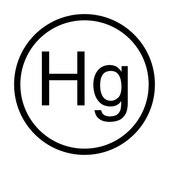Sign In to View Organizational & Contract Pricing.
Select a Size
About This Item
NACRES:
NA.32
UNSPSC Code:
12352203
Product Name
Protein A Antibody Purification Kit, sufficient for 10 purifications
usage
sufficient for 10 purifications
shipped in
wet ice
storage temp.
2-8°C
Application
PURE-1A offers Protein A technology in a prepackaged, easy to use kit form. With this kit, milligram quantities of IgG can be purified from serum, ascites, or cell culture supernatants.
Purification of IgG from other species may be possible, however, the researcher will have to determine the suitability of the kit for their application.
The Protein A Antibody Purification Kit is suitable for use with IgGs from human, mouse, rabbit, goat, and bovine species.
Biochem/physiol Actions
Capacity/Run (by Species)
Human IgG 20-25 mg
Mouse IgG1 8-12 mg
Mouse IgG2a 10-15 mg
Mouse IgG2b 6-10 mg
Mouse IgG3 15-20 mg
Rabbit IgG 8-12 mg
Goat IgG 2-4 mg
Bovine IgG 8-12 mg
Human IgG 20-25 mg
Mouse IgG1 8-12 mg
Mouse IgG2a 10-15 mg
Mouse IgG2b 6-10 mg
Mouse IgG3 15-20 mg
Rabbit IgG 8-12 mg
Goat IgG 2-4 mg
Bovine IgG 8-12 mg
Using our cartridge system, antibodies elute as highly purified proteins at physiological pH. Protein A is a powerful tool for isolation of antibodies from mammalian hosts. Protein A exhibits a high degree of specificity for IgG and ensures an antibody preparation virtually free of IgA, IgM and non-immunoglobulin serum proteins such as albumin.
Disclaimer
For U.S. Customers: Contains mercury; Do not place in trash - dispose according to local, state, or federal laws.


Features and Benefits
- High capacity - purify up to 8 mg of mouse IgG or 25 mg of human IgG per column run
- Specific - will only bind IgG
- Easy to use - antibody is eluted and desalted in a single step, ready to use
- Gentle - avoids prolonged exposure of the antibody to low pH
General description
The Protein A Antibody Purification Kit provides all of the reagents necessary to isolate monoclonal and polyclonal antibodies.
signalword
Danger
hcodes
Hazard Classifications
Acute Tox. 4 Oral - STOT SE 1
Storage Class
6.1C - Combustible acute toxic Cat.3 / toxic compounds or compounds which causing chronic effects
flash_point_f
Not applicable
flash_point_c
Not applicable
Regulatory Information
常规特殊物品
This item has
Choose from one of the most recent versions:
Already Own This Product?
Find documentation for the products that you have recently purchased in the Document Library.
Marcella de Champdoré et al.
Analytical chemistry, 79(2), 751-757 (2007-01-16)
Patulin is a toxic secondary metabolite of a number of fungal species belonging to the genera Penicillum and Aspergillus. It has been mainly isolated from apples and apple products contaminated with the common storage-rot fungus of apples, Penicillum expansum, but
Penio T Todorov et al.
Cancer research, 67(23), 11419-11427 (2007-12-07)
Proteolysis-inducing factor (PIF) is a sulfated glycoprotein produced by cachexia-inducing tumors, which induces atrophy of skeletal muscle. PIF has been shown to bind specifically with high affinity (K(d), in nanomolar) to sarcolemma membranes from skeletal muscle of both the mouse
Improved ELISA test for determination of potency of Inactivated Poliovirus Vaccine (IPV)
Hwang,G et al.
Sensors, 8(12), 2074-2079 (2008)
Andreas H Laustsen et al.
Toxicon : official journal of the International Society on Toxinology, 99, 23-35 (2015-03-17)
The venom proteome of the monocled cobra, Naja kaouthia, from Thailand, was characterized by RP-HPLC, SDS-PAGE, and MALDI-TOF-TOF analyses, yielding 38 different proteins that were either identified or assigned to families. Estimation of relative protein abundances revealed that venom is
Ignacio Gallardo-Carreño et al.
Frontiers in microbiology, 11, 590736-590736 (2021-01-05)
Perchlorate anions are produced by chemical industries and are important contaminants in certain natural ecosystems. Perchlorate also occurs in some natural and uncontaminated environments such as the Atacama Desert, the high Arctic or the Antarctic Dry Valleys, and is especially
Protocols
Antibody purification protocols yield preparations containing endogenous IgG alongside specific antibodies.
Related Content
Instructions
Our team of scientists has experience in all areas of research including Life Science, Material Science, Chemical Synthesis, Chromatography, Analytical and many others.
Contact Technical Service
